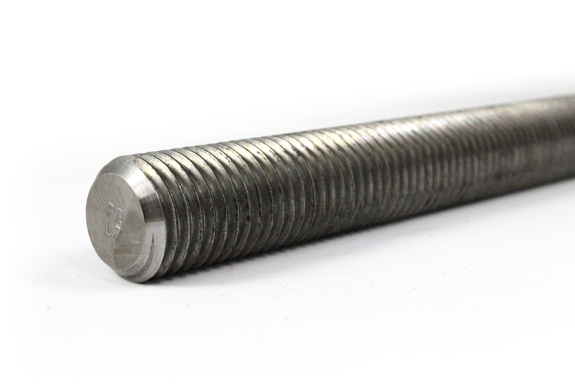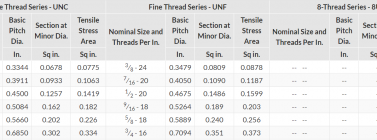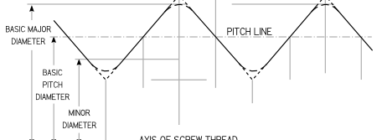Is all thread rod produced with a Class 2A thread?
 There are three classes of thread fit associated with fasteners: Class 1A/1B, Class 2A/2B, Class 3A/3B. The “A” refers to the externally threaded fastener component, typically the bolt, while “B” refers to the internally threaded fastener component, usually a nut. As the number of thread class increases, the threading tolerances become more precise. Most construction fasteners are manufactured to Class 2 threading tolerances.
There are three classes of thread fit associated with fasteners: Class 1A/1B, Class 2A/2B, Class 3A/3B. The “A” refers to the externally threaded fastener component, typically the bolt, while “B” refers to the internally threaded fastener component, usually a nut. As the number of thread class increases, the threading tolerances become more precise. Most construction fasteners are manufactured to Class 2 threading tolerances.
According to the ASME B18.31.3 specification, “Threaded rods are commonly produced in, but not limited to, 3-ft, 6-ft, 10-ft, and 12-ft lengths. Unified threads shall conform to the requirements of ASME B1.1. For UNC and UNF threads, Class 1A will be furnished unless otherwise specified. Class 2A shall be applicable for 8 UN threads and at the manufacturer’s option for other series, and for sizes where Class 1A is not applicable.”
Fully threaded studs, however, which are often cut from mass-produced Class 1A threaded rods, are covered under ASME B18.31.2 and are required to meet Class 2A threading tolerances. ASME B18.31.2 which covers the threading tolerances of studs states, “Threads shall be unified inch coarse, fine, or 8-thread series Class 2A in accordance with ASME B1.1.”
This leaves us with a conundrum. Fully threaded rods are only required to meet the more generous tolerances of Class 1A, while the studs that are often cut from these rods are required to meet the more precise Class 2A tolerance. Although most of the mass-producers of threaded rods make every effort to meet Class 2A tolerances, due to the nature of the manufacturing process, the reality is that some studs cut from these rods may not comply with Class 2A tolerance requirements.
The vast majority of fully threaded studs that are bought and sold in the construction industry are cut by fastener distributors or manufacturers from longer, mass-produced all thread rods. Contractors will often cut longer lengths of all thread rod manufactured to a Class 1A tolerance in the field. When scrutinized, some of these studs may not meet Class 2A threading tolerances. In critical applications and/or when class 2A threads are a necessity, shorter studs can be cut threaded or roll threaded from scratch and then should be able to meet the dimensional threading standards of Class 2A.





l;looking for 1 1/4″-8 threaded rod high strength 2 , 6′ lengths and 10 nuts the same size
@Vic- One of our salespeople will reach out to you shortly.